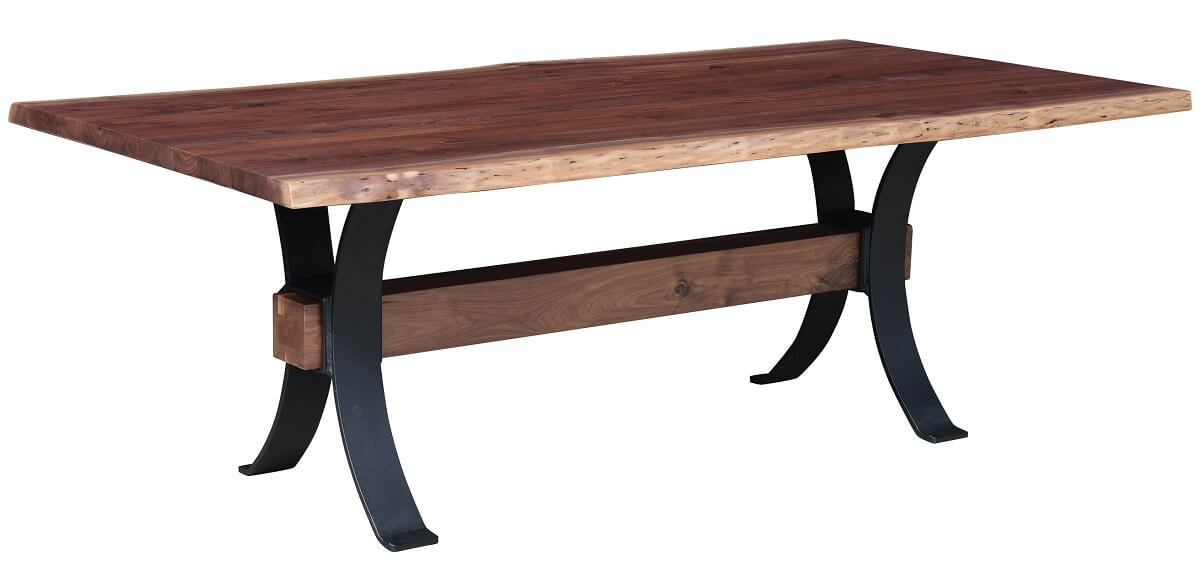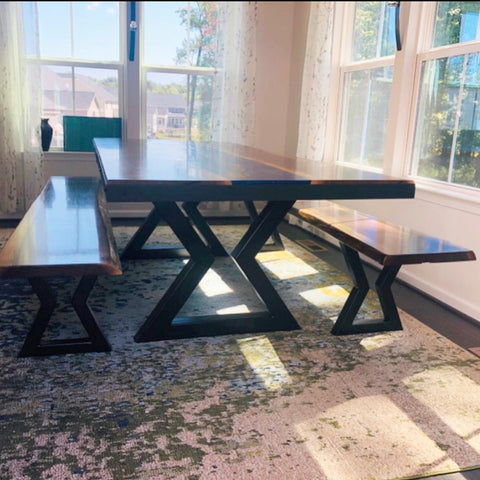Expert Tips for Putting Up Dining-room Table Legs for Maximum Stability
When it comes to mounting dining space table legs, attaining optimum stability is extremely important for both functionality and looks. What particular strategies can enhance security even additionally?
Pick the Right Legs
When selecting the appropriate legs for your eating area table, it is important to take into consideration both performance and aesthetics. The legs you select will substantially affect the overall style and stability of the table. Assess the table's intended usage; if you expect frequent gatherings, stronger legs, such as those made from solid wood or steel, might be extra suitable, as they offer enhanced longevity and assistance.
Following, take into consideration the height and design of the legs in connection with the table top. Standard dining tables usually range from 28 to 30 inches in height, so make sure the legs straighten with this criterion for comfort. The style of the legs must complement the design of the table top-- whether it be modern, rustic, or conventional. Conical legs can include a contemporary touch, while transformed legs could convey a much more classic visual.

Select Appropriate Hardware
Exactly how can the right hardware improve the security and longevity of your dining area table? The selection of appropriate equipment is crucial to making certain that the legs of your table are securely connected and able to endure routine usage. Top quality screws, screws, and brackets offer the essential toughness to sustain the weight of the table, as well as any additional lots placed upon it during celebrations or dishes.
When choosing screws, choose those made from durable products such as stainless-steel or brass, which resist corrosion and keep integrity over time. The length of the screws is similarly vital; they ought to pass through deeply right into the table's structure without compromising stability. For bolted connections, take into consideration using lock washing machines to stop loosening up as a result of vibration or movement.
In addition, utilizing corner brackets can include extra support, especially for bigger tables or those with larger tops. These brackets distribute weight uniformly and help keep the table's form. Guaranteeing that the equipment you choose is suitable for the specific materials of your table will better improve its total security and durability, allowing you to appreciate your dining experience for several years ahead.
Ensure Correct Positioning
Correct positioning of dining-room table legs is vital for both aesthetic appeal and practical stability. Misaligned legs can lead to an uneven table top, which may not just be visually uninviting however also endanger the table's use. To achieve optimum alignment, start by determining the distance from the table's edges to the leg attachment points. This ensures that each leg click to investigate is located equidistant from the edges, developing a balanced appearance.
Utilize a degree throughout installation to confirm that each leg is perpendicular to the table top. This step is crucial, as also minor discrepancies can intensify into substantial stability concerns over time. It is recommended to note the desired leg placements on the bottom of the table with a pencil or covering up tape before securing them. This method works as an aesthetic overview, permitting adjustments as needed.
Moreover, ascertain the positioning after the preliminary screws are tightened, as adjustments may be necessary before fully securing the equipment. By focusing on correct placement, you not just enhance the table's overall style however additionally make sure that it stays steady and practical for several years ahead.

Think About Weight Distribution
After making sure correct placement of the eating space table legs, it is necessary to think about weight distribution to boost security and functionality. dining room table legs. Proper weight distribution is essential in stopping wobbling and ensuring that the table can support its designated tons without danger of tipping or collapsing
When placing the legs, ensure they are placed at equal ranges from the center of the table to equally disperse the weight across the framework. Think about the weight of the table top and any type of items that will frequently rest on it, such as tabletop devices or ornamental pieces. Tables with heavier surface areas should ideally have legs located closer to the corners, as this takes full advantage of the base of support and lessens the danger of instability.
Furthermore, if the table is planned for use in a high-traffic area, take into consideration utilizing much heavier products for the legs or adding supporting aspects, such as cross-bracing or a reduced shelf - dining room table legs. These modifications can aid maintain equilibrium and protect against shifting during usage. Eventually, a well-considered weight distribution technique will significantly improve the table's total performance, ensuring it stays a useful and eye-catching centerpiece for your eating space
Test Stability Before Use
Examining the stability of the dining room table prior to use is an essential step that must not be forgotten. Making certain that the table is secure and safe and secure can stop accidents and prolong the lifespan of the furniture. Begin by using gentle stress to various points on the table surface area. Lower on the center and after that along the edges, changing or observing any kind of wobbling. If the table reveals instability, recognize the legs or joints that may need change.
Next, examine that all screws and bolts are tightened up properly. Loosened links can result in instability and possible damages gradually. If needed, utilize wood glue on joints to enhance stability, making certain to enable adequate drying time.

Conclusion
To conclude, the setup of dining-room table legs needs cautious consideration of materials, positioning, hardware, and weight distribution to attain maximum security. By picking durable legs and high-quality fasteners, making certain precise alignment, and dispersing weight view publisher site equally, the architectural integrity of the table can be significantly enhanced. Carrying out a security examination before routine usage further guarantees that the table will stand up to everyday pressures, consequently giving a dependable and safe eating experience.
When it comes to installing eating area table legs, accomplishing optimum security is vital for both performance and aesthetic appeals. The legs you pick will significantly influence the total layout and stability of the table (dining room table legs). Basic dining tables usually range from 28 to 30 inches in height, so make certain the legs align with this standard for convenience.Appropriate positioning of eating area table legs is crucial for both visual charm and useful security.In verdict, the setup of dining area table legs requires cautious consideration of products, weight, hardware, and placement distribution to achieve optimum security
Comments on “The Impact of Dining Room Table Legs on Your Table's Overall Design”